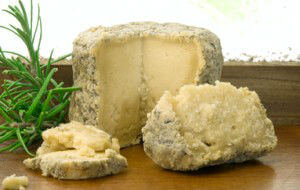
While health officials are not calling this latest recall a public health threat they did say, “mold can act as an opportunistic pathogen for those with compromised immune systems.”
Chobani is back in the news again – this time, 117 people have reported being sick after eating their Greek yogurt. The main complaints were stomach pain, headache, diarrhea and nausea. Although no concrete link has been made between the yogurt and the sickness, the FDA is coordinating with Chobani on a voluntary recall.
According to reports, Chobani instructed grocery stores to destroy 35 types of yogurt that are thought to have been contaminated by a mold associated with dairy products. Chobani spokeswoman Amy Juaristi said that as of last week, 95% of the tainted yogurt with dates between September 11 and October 7th, has been destroyed.
Company representatives now say that the mold found was not a dangerous strain or one that the public needs to be concerned with. However, this latest scare with mold got us thinking.
What is Mold?
Molds are microscopic fungi that live on both plant and animal matter. Mold grows from teeny tiny spores that float in the air. When spores fall on damp food, they grow into mold. The mold feeds itself by releasing chemicals that break down the food and cause it to rot. As the food matter rots the mold expands. There are some tens of thousands of fungi species, this is why the appearance of mold on food is not consistent.
The Dangers of Mold
Some molds can cause an allergic reaction and induce respiratory problems. In the right conditions, molds can produce mycotoxins, which are found mostly in grain and nut crops, but have also been found in celery, apples, grape juice and other produce. Aflatoxins are the most widely known mycotoxins and are cancer causing poisons that fungi release when they feed on foods, especially corn and peanuts.
When you eat food that has been tainted with mold your reaction is dependent on how strong your immune system is. Some people may feel nothing at all after consuming a little moldy food, while others may have a strong gastrointestinal response or feel as if they have a flu bug.
People, who are highly allergic may have a reaction to even breathing in mold spores. Knowing your sensitivity is important to how you will react. Some people just let the uncomfortable symptoms pass while others lean towards drinking some herbal tea or taking a couple of activated charcoal tablets. Both will help push the toxins out of the body faster.
To Eat or Not to Eat
So, the big question when it comes to mold is when to eat and when not to eat certain foods. Not all foods are destroyed by a little mold and some, in fact, are actually enhanced by its presence.
Foods to throw out
If you spot mold on any of these food items, it is in your best interest to toss them:
- Lunch meat
- Bacon
- Hot dogs
- Cooked leftover meat and poultry
- Cooked casseroles
- Cooked pasta
- Soft cheese/dairy – cottage cheese, shredded or sliced cheese, yogurt, sour cream
- Jams or jellies
- Peanut butter (peanuts grow dangerous mold quickly – don’t mess around with this one)
- Cooked grain
- Soft fruits and vegetables such as strawberries, peaches
3 foods you can eat
- Hard salami such and dry-cured ham – scrub off the surface mold
- Cheese made without mold such as Asiago, Pecorino, Parmesan and Cheddar, -cut about 1-inch around the mold spot and do not touch the knife to the mold.
- Firm fruits and vegetables such as carrots, bell peppers, cabbage etc. – cut off at least 1 inch all the way around the mold spot and be careful not to touch the knife to the mold.
What About Cheese Made with Mold?
There are certain cheeses such as blue, Roquefort, Gorgonzola, Brie, Camembert and Stilton that require mold as part of the manufacturing process. However, it is important to note that not all mold is created equal. It is very hard to know what kind of mold is growing on these cheeses. The best rule of thumb is to throw away soft cheese and cut around the moldy spot on the hard cheeses.
What About Bread?
Bread is a likely candidate for mold, we have all had our bread go moldy from time to time. Bread and items such as muffins, cupcakes, cakes etc. grow mold quickly, especially if they are moist or not covered well. Because you cannot see all of the mold and may miss some if you are trying to cut around it – it is best to throw out moldy bread and bread products.
 Tips for Dealing with Mold
Tips for Dealing with Mold
- Keep food covered when serving so that you don’t expose it to the air
- Don’t keep food in cans in the refrigerator
- Don’t leave perishable food out of the fridge for more than 2 hours
- Use leftovers within 3 days, which limits the chance that mold has to grow
- Buy small amounts of fresh food at a time
- Don’t sniff a moldy food item
- Keep your refrigerator counters and cutting boards clean
- Use food before its expiration date
- Always visibly inspect food before eating
- Always check that mold has not spread to other foods in your refrigerator or pantry
- Double wrap any moldy food you are throwing away to prevent animals or small children from coming in contact with it
-The Atlernative Daily
Sources:
http://www.foxnews.com/health/2013/09/10/fda-receives-8-reports-illness-from-chobani-yogurt/
http://www.fsis.usda.gov/wps/portal/fsis/topics/food-safety-education/get-answers/food-safety-fact-sheets/safe-food-handling/molds-on-food-are-they-dangerous_/
http://www.eatingwell.com/blogs/health_blog/4_moldy_foods_you_can_eat_plus_which_foods_to_toss

